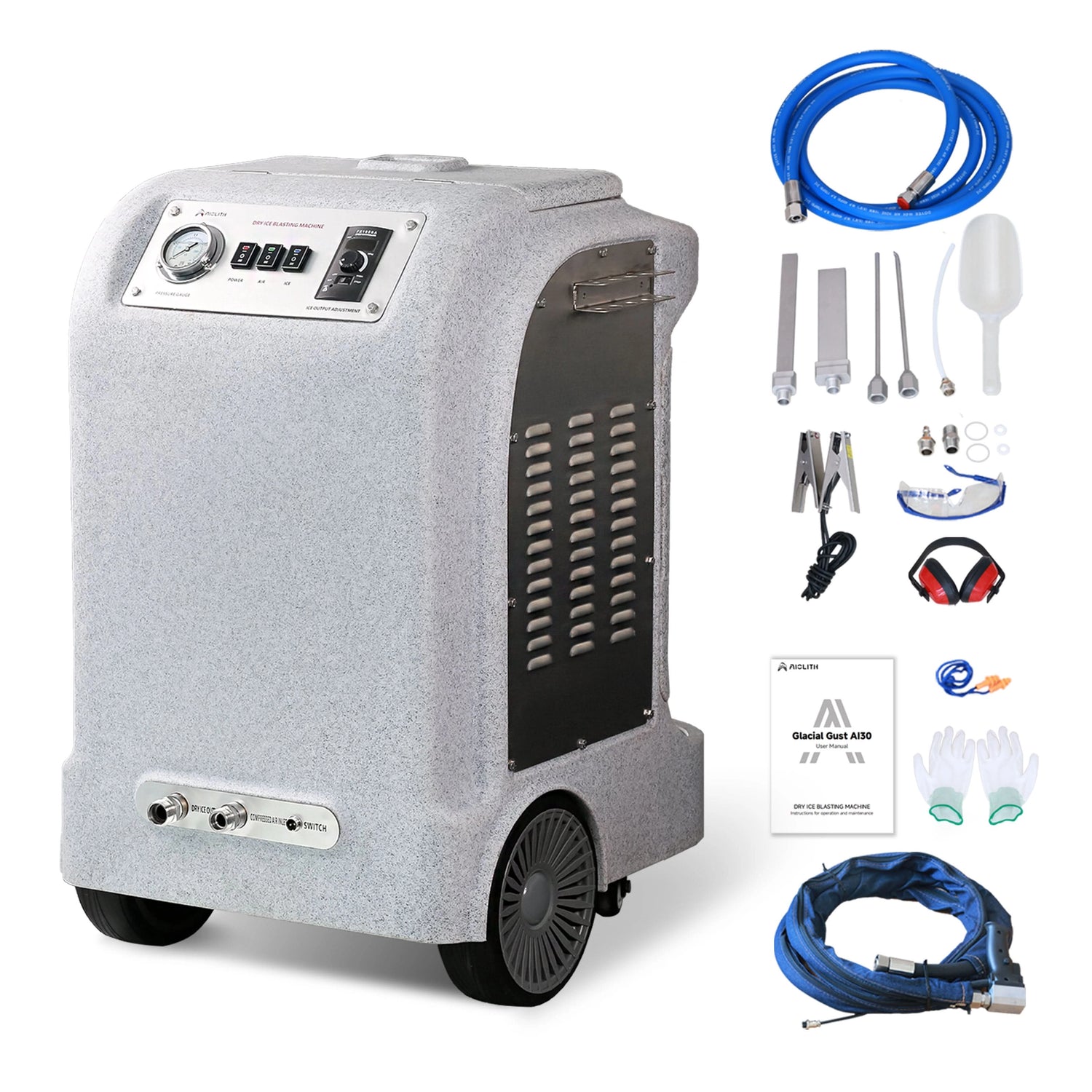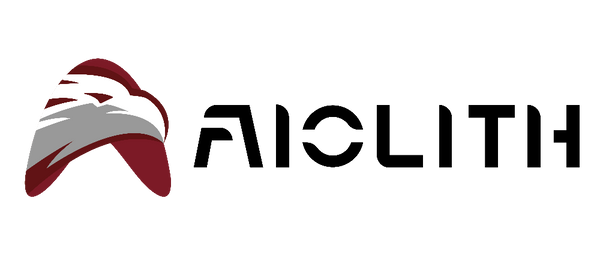7 Effective Tools That Clean Floors Better Than a Mop – Why Aiolith Floor Scrubbers Solve the Biggest Cleaning Pain Points (🎧 Listen Now)
Share
Why Mopping Often Fails to Deliver Truly Clean Floors
If you’ve ever mopped a floor and noticed it still looked dull or felt sticky, you’re not alone. Traditional mopping often spreads dirty water instead of removing it. According to the Journal of Environmental Health (2019), manual mopping leaves behind up to 40% of dirt and bacteria, making it an ineffective method for sanitizing high-traffic areas (Journal Link).
This is why professional cleaners and facilities managers look for better alternatives than mops—tools and machines that don’t just push dirt around but actually remove contaminants and dry floors quickly.
7 Tools That Clean Floors Better Than a Mop
1. Microfiber Floor Cloths
Microfiber has superior dirt-trapping ability compared to cotton mops. It captures fine dust and bacteria, making it excellent for small areas and homes.
2. Steam Cleaners
Steam penetrates porous surfaces and sanitizes without chemicals. Ideal for bathrooms and kitchens, steam cleaners are effective but not efficient for large commercial floors.
3. Wet/Dry Vacuums
These machines suck up both liquid and solid debris, making them excellent for messy spills. However, they don’t scrub or polish floors, which limits their cleaning depth.
4. Scrubbing Brushes
Handheld brushes or pole-mounted brushes dig into grout lines and textured surfaces. While effective for detail cleaning, they are too labor-intensive for larger areas.
5. Rotary Buffers
Common in professional janitorial work, rotary buffers can scrub, polish, and strip floors. They deliver a high-shine finish but require training to use correctly.
6. Kneeling with Sponge or Cloth
For stubborn stains, scrubbing by hand can be effective. However, this method is exhausting and impractical for maintaining large spaces.
7. Aiolith Commercial Floor Scrubbers
The gold standard for professional and commercial cleaning. Aiolith machines combine scrubbing, suction, and drying in one pass, removing dirt and bacteria far more effectively than mops.
Why Aiolith Floor Scrubbers Are Better Than Mopping
Unlike manual methods, Aiolith floor scrubbers deliver:
- Consistent deep cleaning using mechanical scrubbing action.
- Water recovery systems that leave floors nearly dry and slip-free.
- Detergent control to minimize waste and chemical use.
- Versatility across vinyl, tile, sealed wood, and even concrete.
The Centers for Disease Control and Prevention (CDC, 2020) notes that mechanized cleaning significantly improves hygiene in public spaces, reducing the spread of contaminants (CDC Source).
Comparison Table: Mop vs. Alternatives
| Method | Best For | Advantages | Limitations |
|---|---|---|---|
| Traditional Mop | Small spills, quick touch-ups | Inexpensive, widely available | Spreads dirty water, leaves streaks |
| Microfiber Cloths | Homes, light cleaning | Traps bacteria better than cotton | Time-consuming for large spaces |
| Steam Cleaners | Kitchens, bathrooms | Sanitizes without chemicals | Limited coverage |
| Wet/Dry Vacuums | Industrial messes, spills | Handles liquid and solid waste | Doesn’t scrub or polish floors |
| Scrubbing Brushes | Grout and textured surfaces | Deep stain removal | Labor-intensive, slow |
| Rotary Buffers | Large polished floors | Delivers shine and professional finish | Requires training and maintenance |
| Aiolith Floor Scrubber | Commercial facilities, offices | Cleans, extracts, and dries in one step | Higher upfront investment |
The Hidden Costs of Relying on Mops
While mops are inexpensive to buy, they cost more in labor, water, and chemicals over time. A study by the European Cleaning Journal (2021) showed that mechanized scrubbers reduce cleaning time by up to 70% compared to manual mopping, delivering significant long-term savings (ECJ Link).
By contrast, Aiolith scrubbers reduce repetitive labor, improve floor safety, and enhance facility hygiene.
Environmental Benefits of Using Aiolith Scrubbers
Traditional mopping often wastes water and detergent. Aiolith machines are designed with eco-dosing technology, using only the exact amount of water and detergent required. According to the European Chemicals Agency (ECHA, 2022), controlled dosing significantly reduces chemical waste and environmental impact (ECHA Source).
Best Practices for Getting Cleaner Floors Without a Mop
- Sweep or vacuum first to remove loose dirt.
- Use microfiber cloths or pads for dust and small debris.
- Apply low-foam detergents for deeper cleaning.
- Disinfect high-traffic areas regularly.
- Invest in Aiolith floor scrubbers for commercial or large-scale cleaning.
FAQs: Cleaning Floors Better Than Mopping
Q1: Do professionals still use mops?
A: Only for small spots or tight corners. Most professionals rely on floor scrubbers.
Q2: Are steam cleaners better than mops?
A: Yes, they sanitize more effectively but aren’t practical for large spaces.
Q3: Why are floors still dirty after mopping?
A: Dirty mop water often spreads grime instead of removing it.
Q4: Can Aiolith scrubbers be used on hardwood floors?
A: Yes, when properly set up with the correct pads and detergents.
Q5: Are floor scrubbers worth the investment?
A: Absolutely. They save time, reduce labor, and deliver deeper cleaning compared to mops.
Conclusion: The Smarter Way to Clean Floors Beyond Mopping
While mops have their place, they cannot compete with modern cleaning technologies. Alternatives like steam cleaners, microfiber cloths, and wet/dry vacuums offer improvements, but Aiolith floor scrubbers stand out as the most effective long-term solution.
By combining deep scrubbing, water recovery, and drying in a single process, Aiolith machines ensure hygienic, safe, and spotless floors—a standard no mop can achieve.
References
Journal of Environmental Health. (2019). Comparing manual vs. mechanical floor cleaning efficiency. Read here.
Centers for Disease Control and Prevention (CDC). (2020). Environmental cleaning and disinfection guidelines. Read here.
European Cleaning Journal. (2021). Efficiency of mechanized cleaning in commercial spaces. Read here.
European Chemicals Agency (ECHA). (2022). Cleaning product sustainability regulations. Read here.

